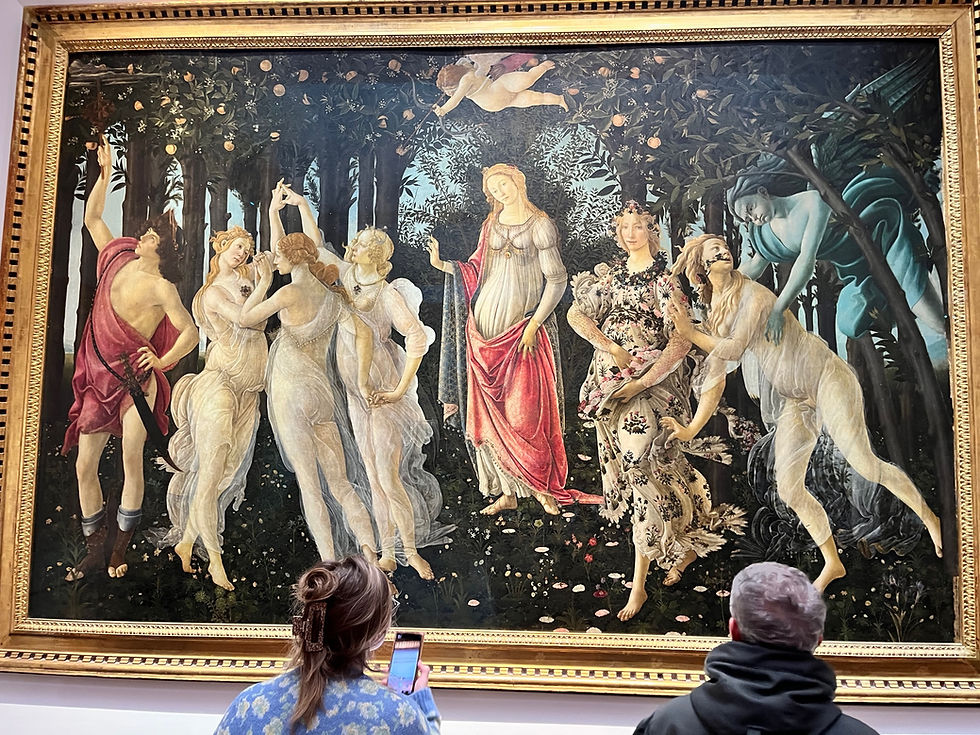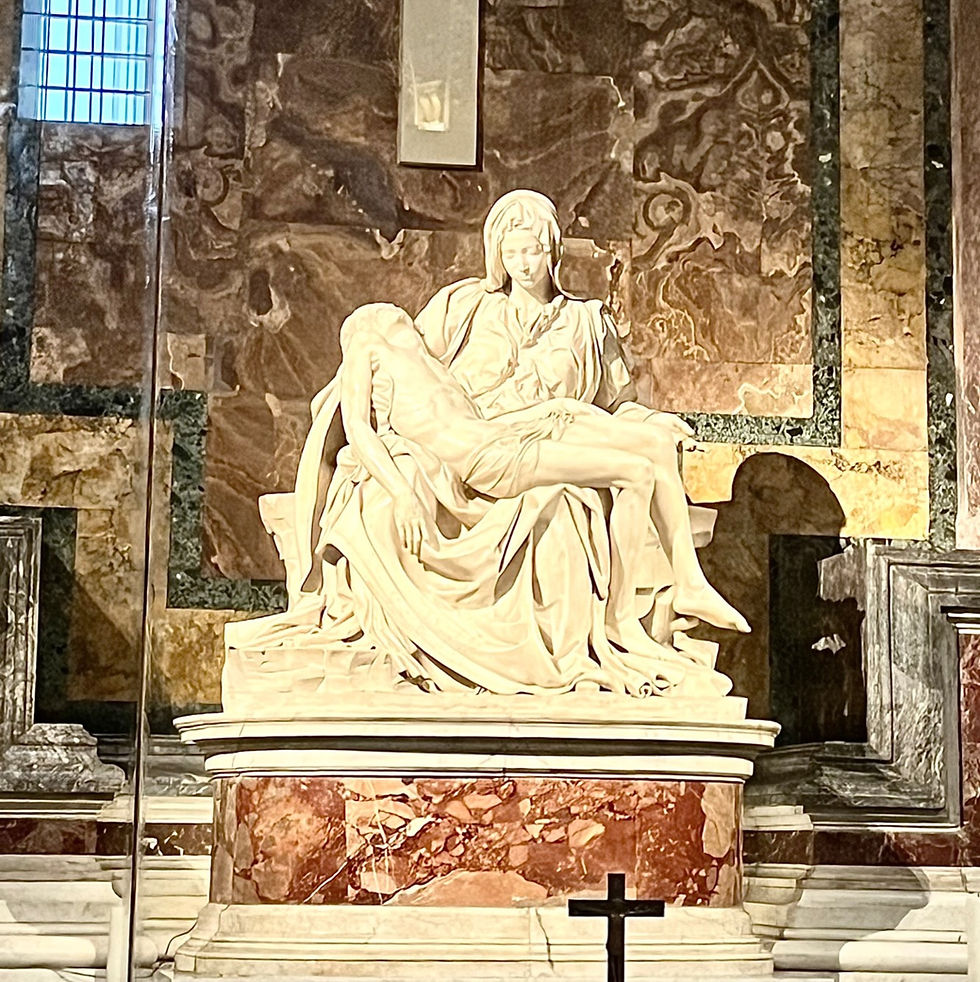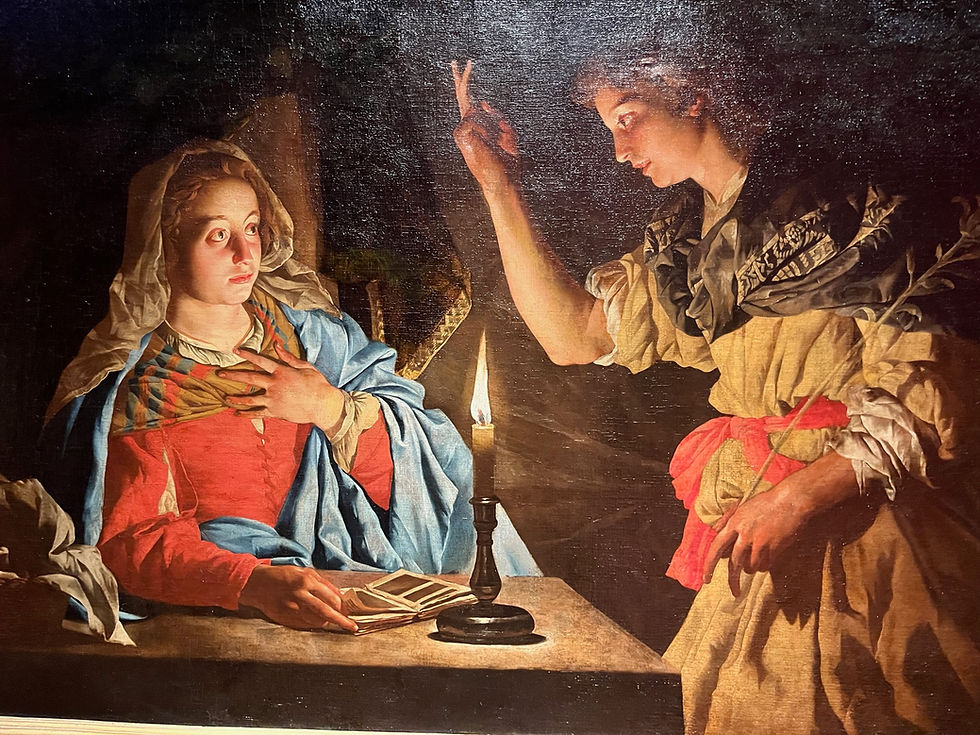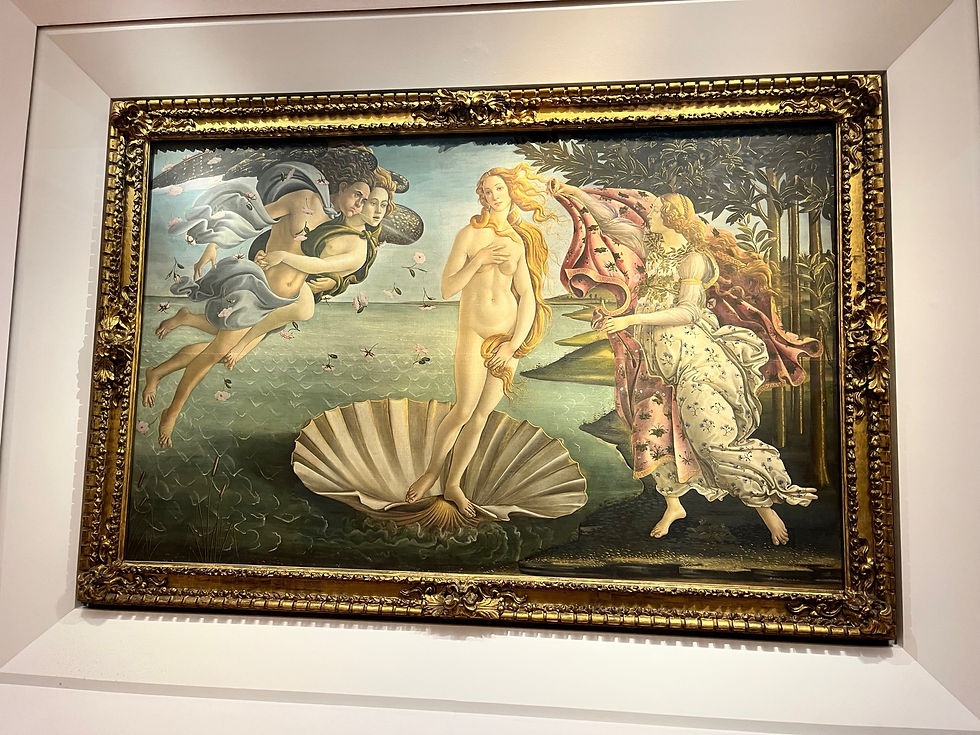Stories in Renaissance Art
- charlsiedoan
- Dec 16, 2022
- 3 min read
Updated: Sep 22, 2023

Italy, especially Florence, is absolutely filled with Renaissance art. The world “renaissance” means “re-birth,” because this was a time of return to the humanistic values of the classical world (aka, the Greeks and the Romans). Renaissance artists focused on the beauty, strength, and perfectibility of the human form, even when they were depicting scenes from the Bible. Most Renaissance paintings have the same kinds of subjects: they tell classical or biblical tales, and are designed to be viewed by audiences who are already familiar with these stories (remember, most people during the Renaissance couldn’t read, and everything they learned about the church, they learned via images). Being familiar with the stories helps you to better appreciate the art, so here are five scenes or topics I saw depicted the most often.

1. The Deposition of Christ from the Cross, also called the Pietà (Pity). This is the moment when Jesus’s body is taken down from the cross after his crucifixion—he is often held by the Virgin Mary as she weeps (pitying her son, hence the name). The most famous Pietà sculpture, by Michelangelo, sits in St. Peter’s Basilica in the Vatican. Fifty years ago, some crazy dude came in and attacked the statue with an axe, so now the statue is behind bulletproof class. There many more Pietàs all over Italy.

2. The Annunciation. This is the second HUGE favorite among Renaissance artists. It is the moment when the angel tells Mary that she is pregnant with the Son of God. My favorite rendering of this story was in the Uffizi—the angel looks so nonchalant: “yeah, sorry about this, but I have to tell you what’s going on” and Mary has really wide eyes, like she’s thinking “you’ve got to be kidding me.”

3. Adam and Eve, especially the Fall from the Garden of Eden. This is the moment when Eve eats the forbidden fruit from the Tree of Knowledge and Adam and Eve are expelled from Eden—the original sin and the fall of humanity from grace. Really any portion of Adam and Eve’s story was fair game for Renaissance artists, but the fall is a special favorite. Usually the snake is lurking somewhere in the background. The most famous panel on the Sistine Chapel ceiling is God’s creation of Adam (the bearded man almost touching fingers with the naked reclining man—you have probably seen it before).

4. Venus, the Roman goddess of love and beauty, is often depicted with her son, Cupid. The goddess in any form, clothes or naked, modest (called Venus Pudica) or bold, was the most popular Roman deity among Renaissance artists, probably because…she was a beautiful woman. We could unpack this further—love, sex, life, fertility, abundance, aesthetics—but you get the picture. The most famous depiction of Venus from the Renaissance is probably Botticelli’s The Birth of Venus. He also did La Primavera (Spring), featuring Venus at the center.

5. The Story of Laocoön. You probably haven’t heard of this guy, but he appears in both the Uffizi Gallery and the Vatican Museum. Laocoön was a Trojan priest who foresaw that the horse gifted to the city by the Greeks (the Trojan horse) was a trap, and wanted to warn the king not to bring the horse inside the gates. Athena and Poseidon, the two primary gods on the side of the Greeks, sent a snake to intercept Laocoön on his way to relay the message. The snake killed him and his two sons. This lovely moment is depicted by a two-thousand-year-old statue in the Vatican (it was a favorite of Michelangelo), and a newer Renaissance statue in the Uffizi, probably copied from the older one.
Comments